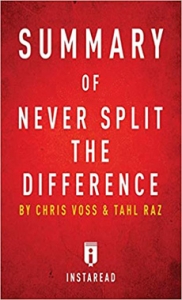In Business and in Blogging, Differentiation is the Key to Success
“There are many ways to differentiate yourself,” writes Michael Hill in Measuring Ourselves. “Become the idea guy, the best manager, the highest-producing sales-person. Find your passion and use it,” he advises.
“Blog differentiation is one of the best ways to get more attention for your brand, Dave Taylor agrees. Starting a blog these days is easy, he admits. However, with millions of blogs that are already popular, it’s difficult to stand out from the crowd. Taylor lists several aspects of blog differentiation, including topic, demographic target and content style.
Collectivedge.com offers a number of differentiation suggestions that, at Say It For You, I’ve found to be very effective in blogging for business:
“Connect with your readers by always writing in the first person”
In blog marketing, I stress first person writing because of its one enormous advantage – it shows the people behind the posts, revealing the personality of the person or the team standing ready to serve customers.
Don’t be afraid to be controversial.
In any field, there will always be controversy – about best business practices, about the best approach to providing professional services, about acceptable levels of risk, even about business-related ethical choices. Rather than ignoring the controversy, bloggers need to comment on the different views and “weigh in”.
Borrowing from successful writers allows you to pick up handy techniques and tricks.
Business bloggers, I teach, need to spend at least as much time reading as writing, in order to keep up on what others are saying on the topic, what’s in the news, and what problems and questions have been surfacing. Plus, when you link to someone else’s remarks on a subject you’re covering, that can not only reinforce your point, but add value to readers by aggregating different sources of information in one business blog.
Make it pretty – blog posts with images get twice as many shares.
No doubt about it, the story line is paramount in blogging for business.. Where visuals come in, whether they’re in the form of “clip art”, photos, graphs, charts, or even videos, is to add interest and evoke emotion.
As content writers, we help business owners and practitioners differentiate themselves. In fact, blog content is the ideal vehicle for adding explanations, offering more details and updates, telling stories, and expressing owners’ beliefs about what’s most important to them in serving clients and customers.






Follow us online!